In the not too distant past of the mid-to-late twentieth century you probably knew where you were going and navigated your way towards it with a map and a bit of local knowledge, using industrial landmarks as way markers. There would be gas holders, big factories, grand mills with their names built in to the towers, pit heads… maybe a blast furnace or dock crane, but all skyline-grabbing shapes that defined their areas and gave them their identity – you couldn’t miss them. And there was no greater structure vying for attention on the horizon than the good old fashioned power station.
The post-war consensus for a reliable source of electricity for the masses resulted in the nationalisation and consolidation of all municipal and private operations and the birth of what became the Central Electricity Generating Board. As the CEGB set about developing and building a network of new power stations in the 1950s and 60s it quickly earned respect as one of the best examples of Government planning run by professional engineers of its day. By the time it was privatised again in 1990 it had achieved an unwanted reputation for the exact opposite, but its infrastructure legacy would live on – to varying extents – in the decades that followed.
Now as we slide further into the post-industrial Britain of the 21st century it’s ever more apparent that this once important achievement is on the verge of vanishing from the landscape completely. Okay, some of the more architecturally significant pre-nationalisation examples have been saved and repurposed – Bankside Power Station on the Thames became the Tate Modern, while the unmistakable Battersea (below) is well on its way to becoming London’s most prestigious heritage address. But what of the magnificent hyperboloid geometry of the concrete cooling tower?
When industrial-scale sculptor Antony Gormley waded in to the campaign to save Sheffield’s Tinsley towers back in 2008 he described their proposed demolition as “an act of cultural vandalism”. And he was right – not only because they were statuesque and historically significant, but because the skyline dominating elegant concrete structures adjacent to the elevated section of the M1 were the gateway to the city, and a huge part of its identity to boot. Sheffield may have been famous for its glowing steel foundries and pioneering council estates, but it was two redundant towers from a long-closed power station that captured the hearts and imaginations of the locals. They were iconic.
Sadly this was a couple of years before my photographic interests collided head-on with oft maligned industrial wastelands – but when it did happen it marked the start of a decade exploring all manner of derelict and abandoned sites across the land. In 2011 I was back in Sheffield to meet an old friend and we set off in search of adventure in the most unlikely of places – on the outskirts of Doncaster…
Back then huge chunks of redundant power stations were left standing long after the turbine halls were dismantled and demolished, often with relatively easy access for the curious to explore. And that’s how we arrived at Thorpe Marsh.
Barnby Dun was one of numerous little-known places that the CEGB put firmly on the map by association with a new power station. Thorpe Marsh was commissioned in the harsh winter of 1962/3 when all the gauges froze – the first of many incidents that would dog it through its short operating life. In 1973 the deaths of four workmen were blamed on breaches in safety provisions, it was forced to close by pickets in the miners strikes of 1972 and 1984, and ultimately it fell victim to the oversupply of electricity in the grid post-privatisation, closing earlier than planned in 1994 after just 31 years.
These structures, doubtless impressive from afar, are awe inspiring from within. But it’s the peace of this deserted post-apocalyptic landscape that remains my enduring memory. On hot sunny days, at sunset, at twilight… even under cold grey sleet-laden skies, several visits over the following year and a bit captured its final days, as the site was fully cleared in 2012.
These four concrete behemoths catching the golden light of the setting sun (above) demonstrate how such modern and unlikely structures can be every bit as beautiful as a Gothic abbey or Medieval castle, and just as important a part of the national story. And yet there is no protection nor attempt to save something of this post-war industrial chapter.
In the case of Thorpe Marsh the loss of the towers is perhaps less obvious than at, say, Ferrybridge, whose removal from the key M62/A1M motorway intersection must surely have confused more passing drivers than just myself. Seen here idling in its final hours late on a summer’s evening in 2015, most of the towers have now been brought down in the name of redevelopment, taking with it all that was distinct about that interminable stretch of road.
In 1965 the collapse of one of Ferrybridge’s original cooling towers had led to the strengthening of others, and Thorpe Marsh’s were coated in spray concrete at the same time as part of efforts to avoid a similar disaster. By the 1980s though cracks had developed as a result of reinforcement rod corrosion and they needed filling – giving them the distinct if rather unappealing streaky look they had in later years. Exclusion zones were even put in place around them during high winds thereafter to mitigate the all too real risk of collapse.
And therein lies the problem with trying to save structures like this for heritage’s sake. They were built as part of power stations that were designed to last just 30-40 years, towering over 300 feet up in the air and constructed of wafer thin reinforced concrete exposed to the often extreme elements. Lack of maintenance post closure only aided further deterioration and to maintain them for aesthetics alone would be a continual and significant expense.
Eggborough is another casualty of the fossil fuel backlash, currently being decommissioned and one of a foursome when joined by Thorpe Marsh, Ferrybridge and Drax that once powered 25% of the nation. Of those four only two are still standing and only one – Drax – remains in use, though at some point soon these will also be demolished. Pictured below in the autumn of 2019 Eggborough appears bleakly reflected in the flooded surrounding landscape, perhaps a visual metaphor for the exacerbation of extreme weather patterns blamed on burning fossil fuels.
Just over a year ago the unique pink-orange hued cooling towers of the Ironbridge power stations were demolished. As in Sheffield there had been a campaign to save them, and given that they were part of the celebrated home of the Industrial Revolution it seems a shame that they weren’t. But we are where we are, and in this case we’re in the process of becoming a housing estate. Isn’t everything these days?
That really only leaves Willington in Derbyshire, a pleasing V-formation in a semi-rural location that could perhaps be considered for saving – or at the very least just leaving well alone – as a kind of industrial Stonehenge. For all the perennial talk of demolition they remain for now, offering a glimpse of magnificent 1950s engineering to everyone that might be passing. And to anyone with a sense of adventure that can find a hole in the fence to enjoy them up close.
I’ve visited Willington on four occasions and driven past them on the A50 on many more than that. On the last occasion in 2019 I ended up at the Victorian pumping station down the road talking to an elderly gentleman about the huge thermal inefficiencies, discharging of warm water in to the Trent and other such tales from the tunnels during his days as an engineer at the site. Just the kind of thing I like to do over a cup of coffee on a day out.
Willington demonstrates perfectly how you just know exactly where you are on a road when a power station looms in to view, without the need to look at a map. Take them away, along with all the other industrial landmarks, and you don’t just end up in a dull landscape without form, history or distinction, you end up lost.
Literally.
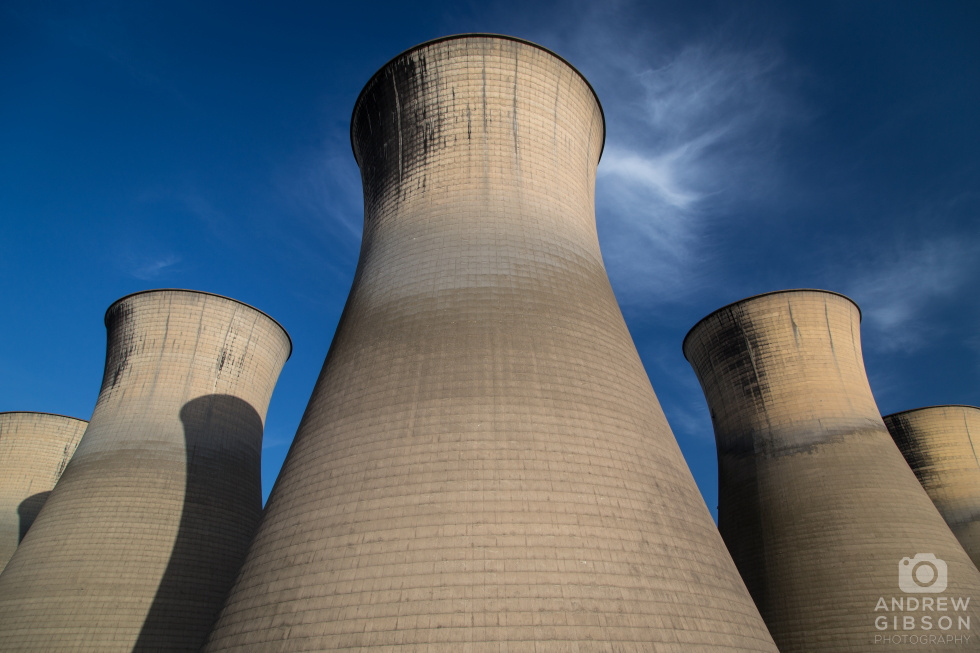
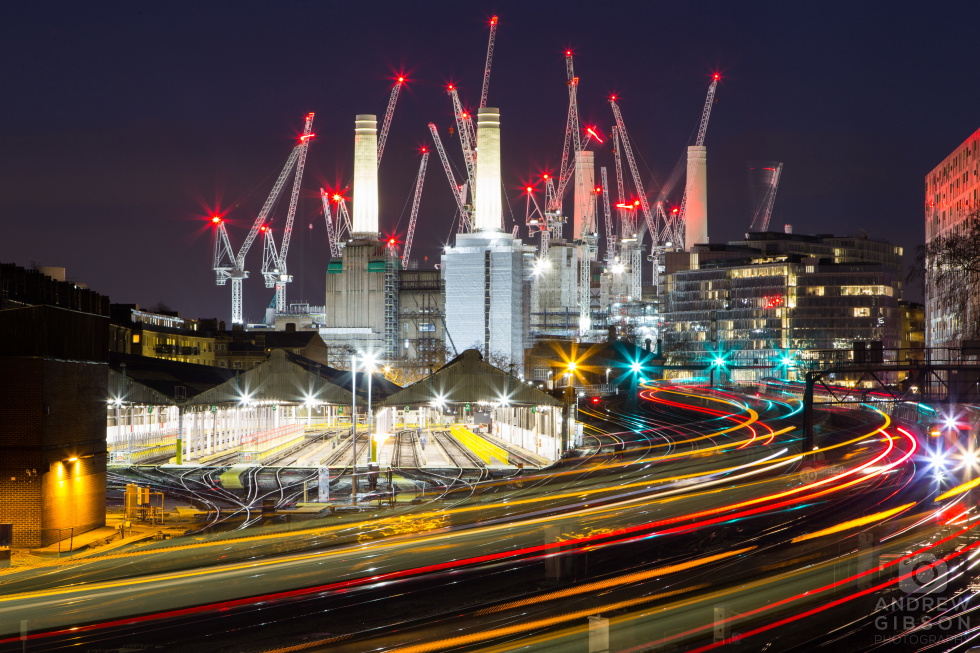

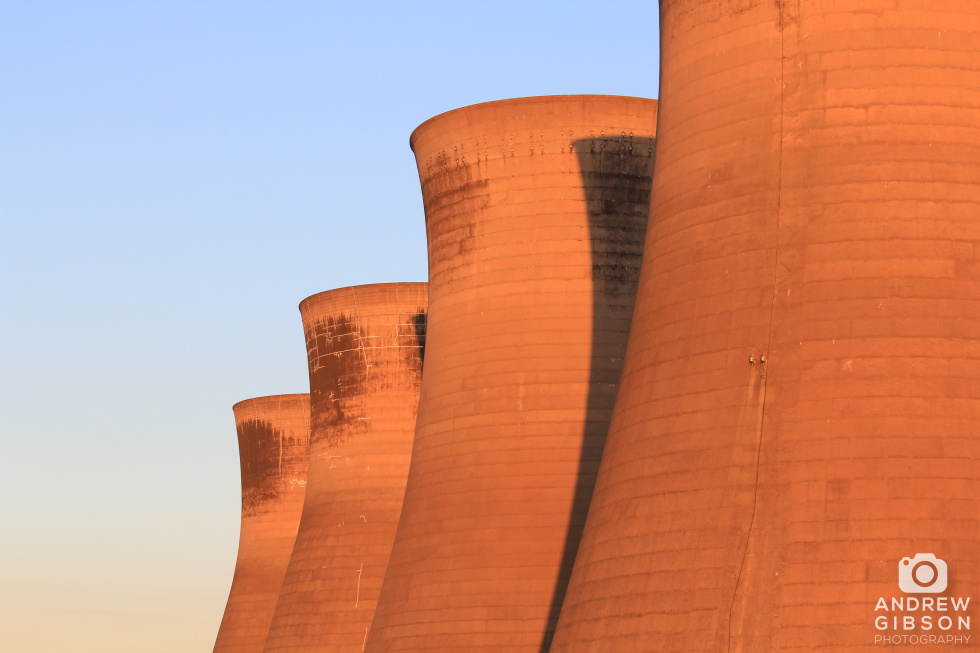


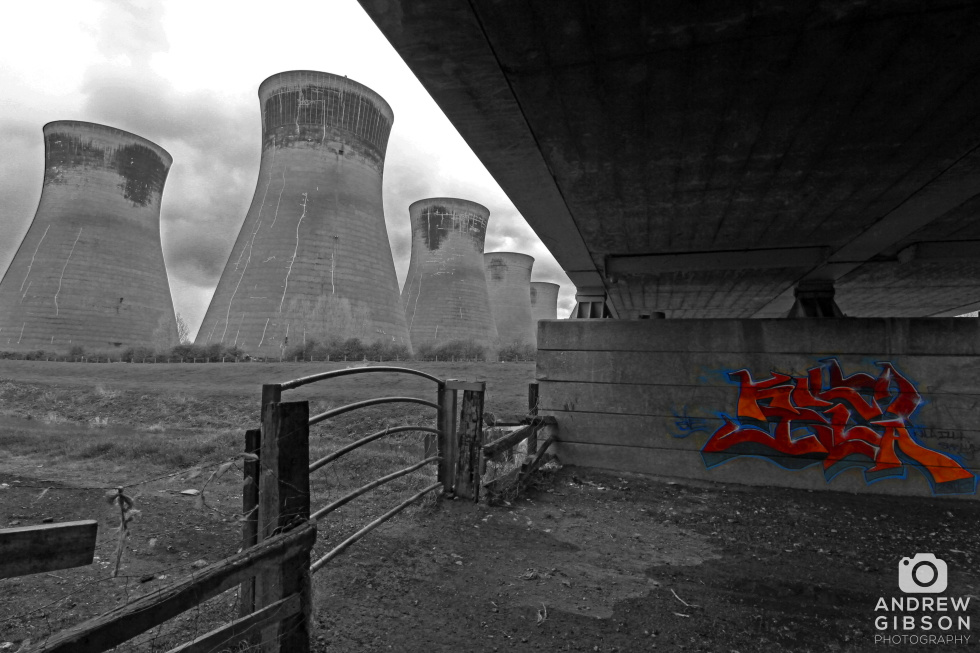

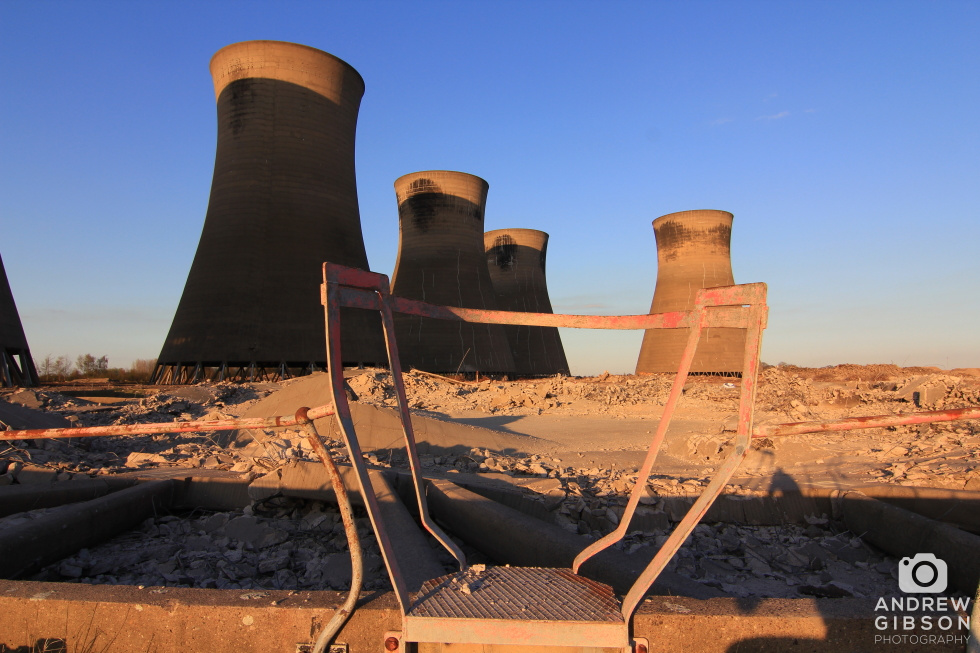
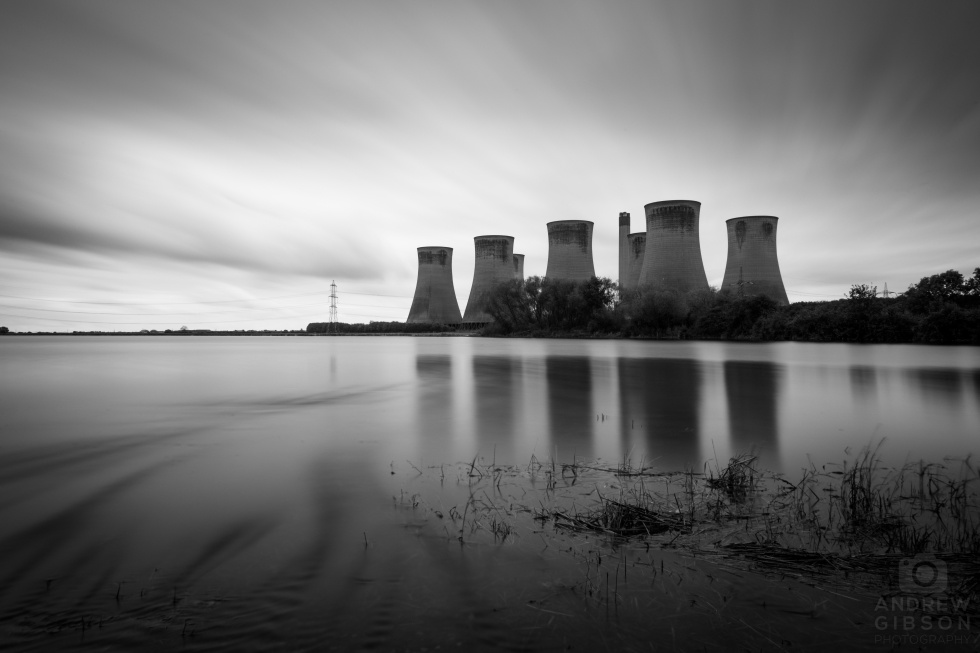

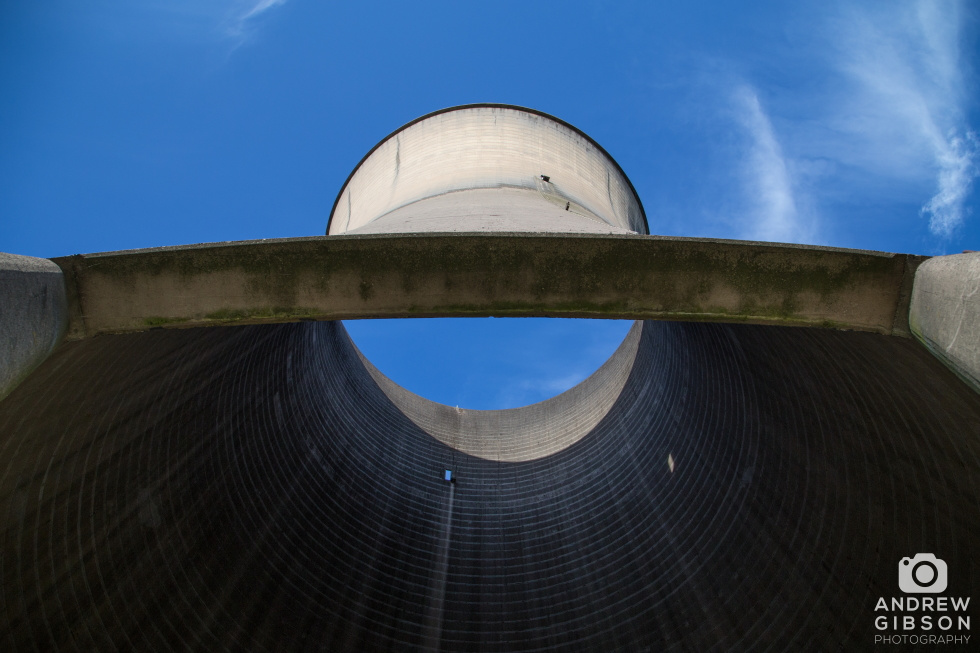

Comments
Glen Adair